How to make a solar battery with your own hands: methods of assembly and installation of a solar panel
Hydrocarbons have been and remain the main source of energy, but increasingly, humanity is turning to renewable and environmentally friendly resources. This has led to increased interest in solar panels and generators.
However, many do not dare to install a solar system due to the high cost of the complex. You can reduce the cost of production if you take on its creation yourself. Doubt your own strength?
We will tell you how to make a solar battery yourself, using the available accessories. In the article you will find all the necessary information in order to perform the calculation of the solar system, select the components of the complex, assemble and install the photo panel.
The content of the article:
Pros and cons of solar systems
According to statistics, an adult uses about a dozen different devices powered by the network every day. Although electricity is considered a relatively environmentally friendly source of energy, this is an illusion because it uses resources that pollute the environment.
From this point of view, solar power much more profitable.
Assembly parts solar panels and generators have long been on sale, and if you want to assemble a system, anyone can. This will require some financial investment and time. The assembly process is painstaking, requires attention and accuracy, but the work itself is not very labor intensive.
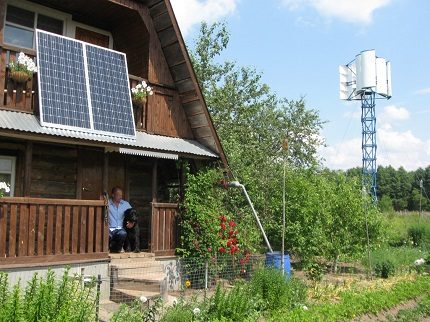
Benefits of using solar energy:
- Huge potential. The sun is able to give enough energy to satisfy all human needs. It is renewable and inexhaustible, which compares favorably with coal, oil products, natural gas.
- Availability. The sun is everywhere - in the hottest countries, and in the coldest. It is quite enough for all needs.
- Environmental friendliness. Due to the total energy crisis, green energy is the most promising area for research and high-tech developments. Solar panels do their job perfectly without harming the environment.
- No noise. Solar systems operate silently, which distinguishes them from many other energy sources.
- Cost-effectiveness. Operation and maintenance of solar panels do not require any special costs. Having invested money once, the owner can use the system for 20-25 years. The main thing is to clean the elements in a timely manner.
- Wide scope. Solar panels can generate enough energy to provide the house with electricity and heat. However, this is not the only area of their application. Heliosystems are used to desalinate water and even to provide energy to orbital stations.
So far, solar panels are expensive, although now there are ways to significantly save on their own manufacture. Every year, new developments are introduced that simplify and reduce the cost of the process of obtaining solar energy.
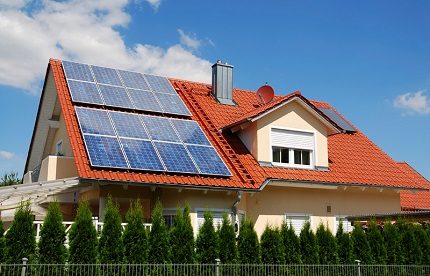
Interesting development - flexible solar panels. Due to its elasticity, it is much easier to install a photoplot - the panel “adjusts” to the shape of a roof or other support.
One of the modern technologies is thin-film modules, which are introduced into building materials. Transparent storage elements designed for use in window structures also appeared.
This is a development by a Japanese company. Sharp. Experts believe that in the near future such solar panels will become many times more powerful and profitable.
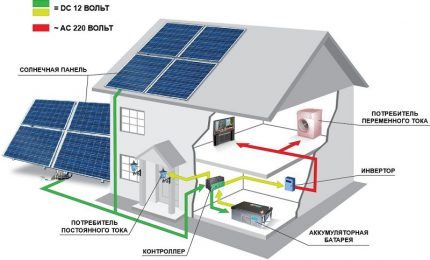
For objective reasons, solar systems cannot yet completely replace hydrocarbons, because receiving and accumulating solar energy is associated with high costs, but they can be a good source alternative power supply at home or individual electrical appliances.
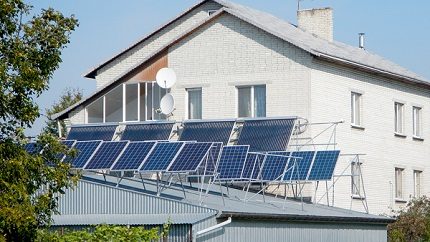
Technologies are developing rapidly, and solar panels can be upgraded and expanded, so you should start assembling suitable systems now.
A detailed overview of the types of solar panels is given in this article.
What components are needed and where to buy them
The main detail is the solar photo panel. Typically, silicon wafers are bought over the Internet with delivery from China or the United States. This is due to the high price of components of domestic production.
The cost of domestic plates is so high that it is more profitable to order on Ebay. As for marriage, only 2-4 per 100 plates are unusable. If you order Chinese plates, then the risks are higher, because quality is poor. The advantage is only in price.
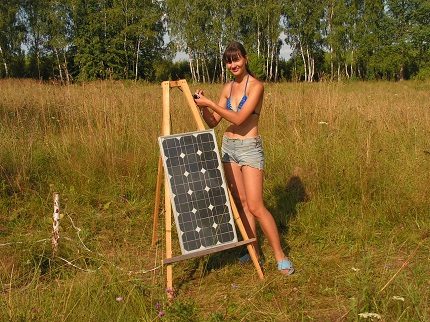
The remaining components can be purchased at any electrical goods store. Also required are tin solder, a frame, glass, film, tape and a pencil for marking.
When buying components, you should pay attention to the manufacturer's warranty. Usually it is 10 years, in some cases up to 20. It is also important to choose the right battery. The savings on it often turn into troubles: hydrogen can be released during charging of the device, which is fraught with an explosion.
Features of calculating the power of systems
Before you buy accessories and make a solar panel, calculate the required power of the device and battery capacity.
The easiest way is to use online calculators located on some sites on the Internet.
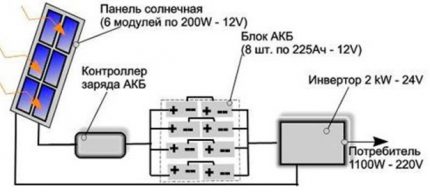
The most important indicator that will have to be considered is the average monthly amount of energy consumed. It can be determined by the counter.
You should also make a discount on the features of the solar panels themselves. They are able to give maximum power only under the condition of a clear sky, and the angle of incidence of sunlight should be direct.
If the weather is cloudy or the angle of incidence of the rays is too sharp, battery power may drop by 20 times. Even the smallest clouds are enough to halve the performance. Therefore, in the calculations they are guided by the fact that 70% of the energy will be generated from 9 to 16 hours, and the rest of the time - up to 30%.
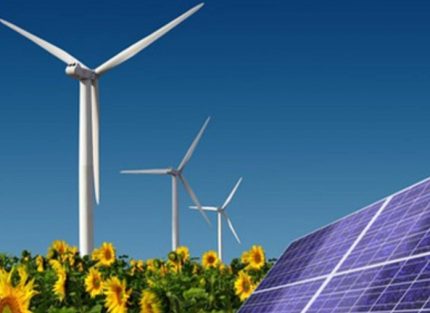
Under conditions close to ideal, during “working hours”, 1 kW panels produce 7 kW / h, and in the early morning and evening - about 3 kW / h. The second indicator is better not to take into account at all and leave “in reserve”, taking into account possible clouds and changes in the angle of incidence of the rays.
It turns out that you should focus on 210 kW / h for 1 calendar month. This is an ideal indicator that requires adjustment.
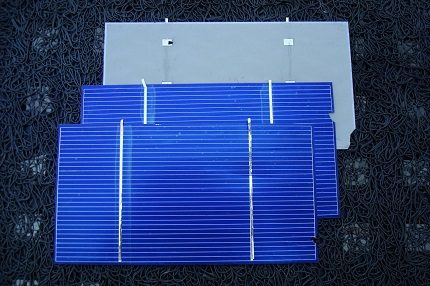
To determine the real amount of energy, you should find data on how many sunny days a year are in a particular region. During these periods, the battery power will not be even half of the passport indicator. If the devices will work in autumn and winter, then you need to make an adjustment of 30-50% for cloudy weather.
Step-by-step instructions for assembling a solar panel
The assembly work begins with a diagram and a project. It is necessary to clearly understand how the solar panel will be arranged and fixed. So, if the efficiency of the system directly depends on the angle of inclination relative to sunlight, care should be taken so that this angle can be changed.
Many ready-made models have mechanisms that automatically rotate the panels, and in self-made ones you will have to think through them yourself.
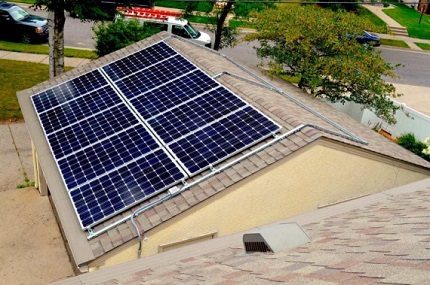
Assembly technology depends on the total area of the panels, their number, features of additional materials. The vast area of the system guarantees its higher power, but the weight of the structure also increases, which also has to be taken into account, because the roof must withstand it.
Stage 1: fabrication of the structure
When all the components are prepared, you can proceed with the assembly of the housing on which the entire structure will be held.
The following materials will be required:
- plywood sheets cut to the size of the panels;
- fiberboard boards;
- wooden slats from which the sides will be made;
- materials for fasteners: self-tapping screws, corners, suitable adhesive composition;
- plexiglass;
- paint and impregnation to ennoble the appearance of the finished structure and protect it from decay.
First of all, they prepare the base - low boards are glued to the plywood. They should not close the panels, so it is worth choosing slats about 2 cm. To prevent the sides from peeling off, they are additionally fixed with screws and corners.
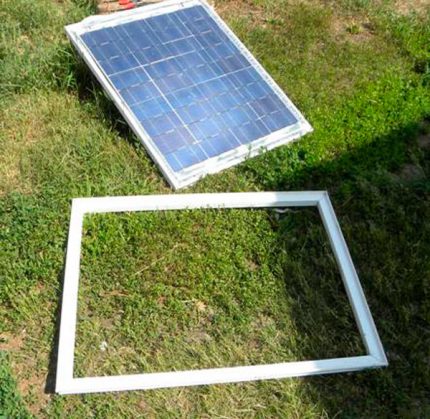
Bottom of the base and sides are drilled in several places to provide ventilation. The cover cannot be drilled, asstructural elements may get wet. For fastening the panels, it is better to choose fiberboard boards, since they do not conduct current. If desired, fiberboard can be replaced with another material.
Stage 2: installation and fastening of elements
Solar cells should be evenly spread on the substrate with the “wrong” side and soldered conductors. To do this, you will need to mark the soldering points. In order not to spoil all the modules, it is better to first connect only two elements in series.
If everything is in order, the remaining modules are also soldered. As a result, a neat chain of connected elements should appear on the substrate.
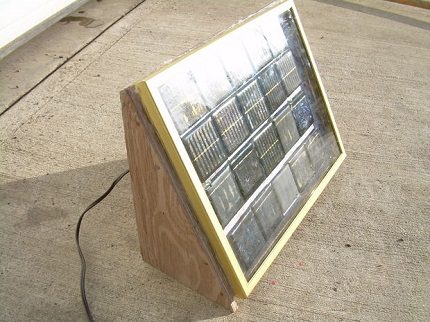
When all the modules are connected, they can be turned over to be fixed on the panel. As the adhesive, you can use epoxy resin or silicone sealant. It is advisable not to smear the edges of the modules so that the structures do not break if the frame is deformed. Glue the elements firmly enough in the center.
Stage 3: features of fixing the cover
After assembling the battery on the frame, it is closed with a plexiglass cover, checked and fixed again. It is important that the adhesive is completely dry before installing the cover, otherwise it will continue to evaporate and leave cloudy traces on the plexiglass.
A two-pin connector is installed on the output cable. It is needed to connect the controller. It remains to once again check the operation of the system and correct defects if they are discovered.
Stage 4: installation of the finished system
Batteries are installed on the ground, on walls or on the roof. It depends on the wishes of the owner of the building. The main thing is that the system is located on the south side of the building and nothing interferes with its operation.
If the structure is planned to be mounted on the roof slope, you need to make sure that the surface will withstand the additional load. The system is installed so that it is located at an angle of 30-40 ° to the roof, and tightly fixed.
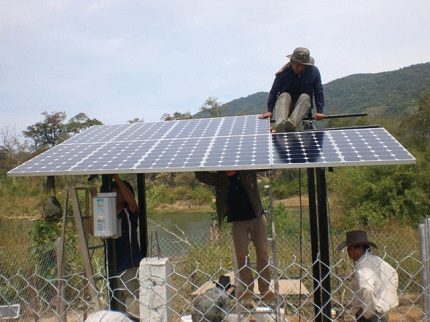
An excellent solution is to mount the system to a metal frame structure of a thick profile. The minimum cross section is 25 * 25 mm, and with a large area of the structure it is better to choose a more durable profile. A snow retainer is installed in front of each such frame or brackets are equipped with snow blowers.
Our site has a block of articles on the assembly, installation and connection of solar panels, we recommend that you read:
- Schemes and methods of connecting solar panels: how to properly install the solar panel
- Connection diagram for solar panels: to the controller, to the battery and to the serviced systems
Conclusions and useful video on the topic
Descriptions are not enough to fully understand the features of the assembly and installation of solar panels. In addition, there are various ways of fastening, and "craftsmen" improve their skills and constantly invent new ways to solve old problems.
We offer video tutorials and tips from experienced craftsmen to make it easier for you to understand the process of assembling solar systems. Choose the recommendations that best suit your plans and wishes.
Where to buy accessories and how to assemble the system is described in the video below:
Complete step-by-step description of the assembly process:
An original approach to the assembly of solar panels, specialist advice:
Assembly instructions for a solar power plant for the home:
Alternative energy is really relevant.If you decide to understand how to get energy without hydrocarbons, you can be proud that you care not only about yourself, but about the planet as a whole.
A simple solar battery will help you provide yourself with green electricity and save our common home. It’s easy to assemble the system, the main thing is to want and do it.
Have experience in making a solar panel? Please share information with our readers, suggest your method of assembling the solar system. You can leave comments and add homemade photos in the form below.

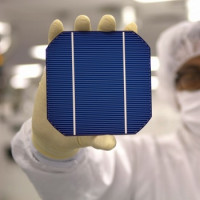 How to make a solar battery with your own hands: self-assembly instruction
How to make a solar battery with your own hands: self-assembly instruction 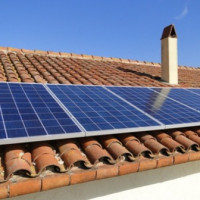 Schemes and methods of connecting solar panels: how to properly install the solar panel
Schemes and methods of connecting solar panels: how to properly install the solar panel 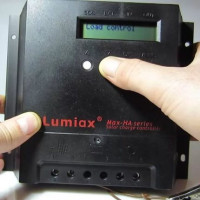 Solar charge controller: circuit, principle of operation, connection methods
Solar charge controller: circuit, principle of operation, connection methods 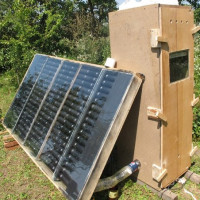 How to make a solar collector for DIY heating: a step-by-step guide
How to make a solar collector for DIY heating: a step-by-step guide  The principle of operation of the solar battery: how the solar panel is arranged and works
The principle of operation of the solar battery: how the solar panel is arranged and works 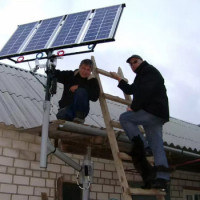 DIY solar generator: instructions for making an alternative energy source
DIY solar generator: instructions for making an alternative energy source  How much does it cost to connect gas to a private house: the price of organizing gas supply
How much does it cost to connect gas to a private house: the price of organizing gas supply  The best washing machines with dryer: model rating and customer tips
The best washing machines with dryer: model rating and customer tips  What is the color temperature of light and the nuances of choosing the temperature of the lamps to suit your needs
What is the color temperature of light and the nuances of choosing the temperature of the lamps to suit your needs  Replacement of a geyser in an apartment: replacement paperwork + basic norms and requirements
Replacement of a geyser in an apartment: replacement paperwork + basic norms and requirements
The information is well selected, it really can be guided by the manufacture of a solar battery. I learned about the existence of green energy a few years ago. I am still struck by the thought that there are inexhaustible renewable options (the energy of the Sun and wind), and humanity has not yet fully utilized them. Even in my dreams I have a desire to transfer my home to green energy completely. But while there is no money for this, since all this equipment is expensive, as in principle it is written here. But if you switch to green sources, at the end of the payback period of your equipment, you will receive energy for FREE. This, of course, is hard to believe, now it remains only to wait until progress reaches Russia, making this technology publicly available.
Aliya, in fact, “solar energy” in its current form will never pay for itself. Using high-quality panels and components, timely maintenance and suitable weather conditions, the payback period of such a system will be at least about 10 years. And by then it will be time to change solar controllers, inverters, in autonomous systems - batteries, and the panels themselves are not eternal. And all this under conditionally ideal conditions. In general, there is no economic feasibility. Yes, and environmental either.